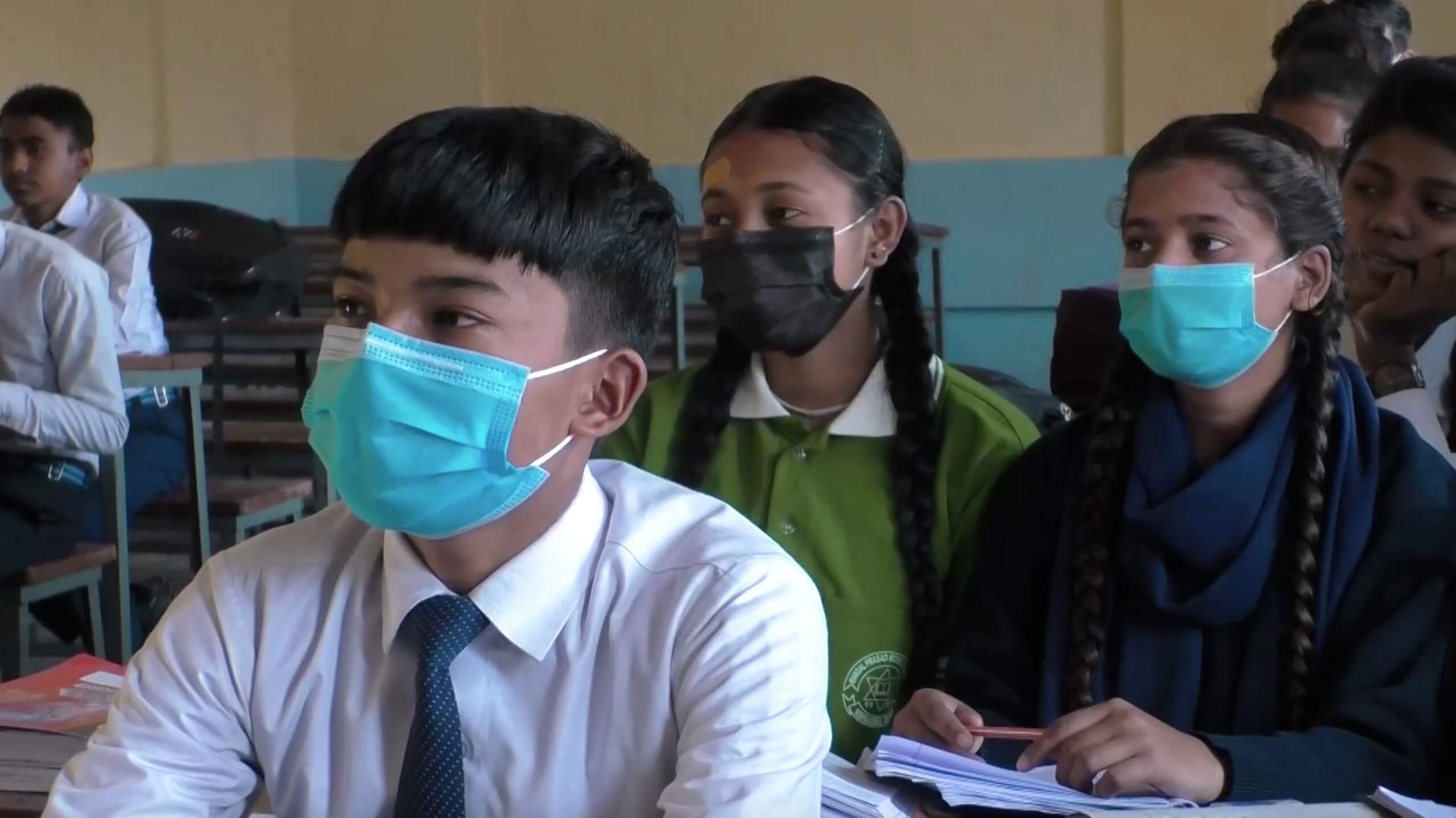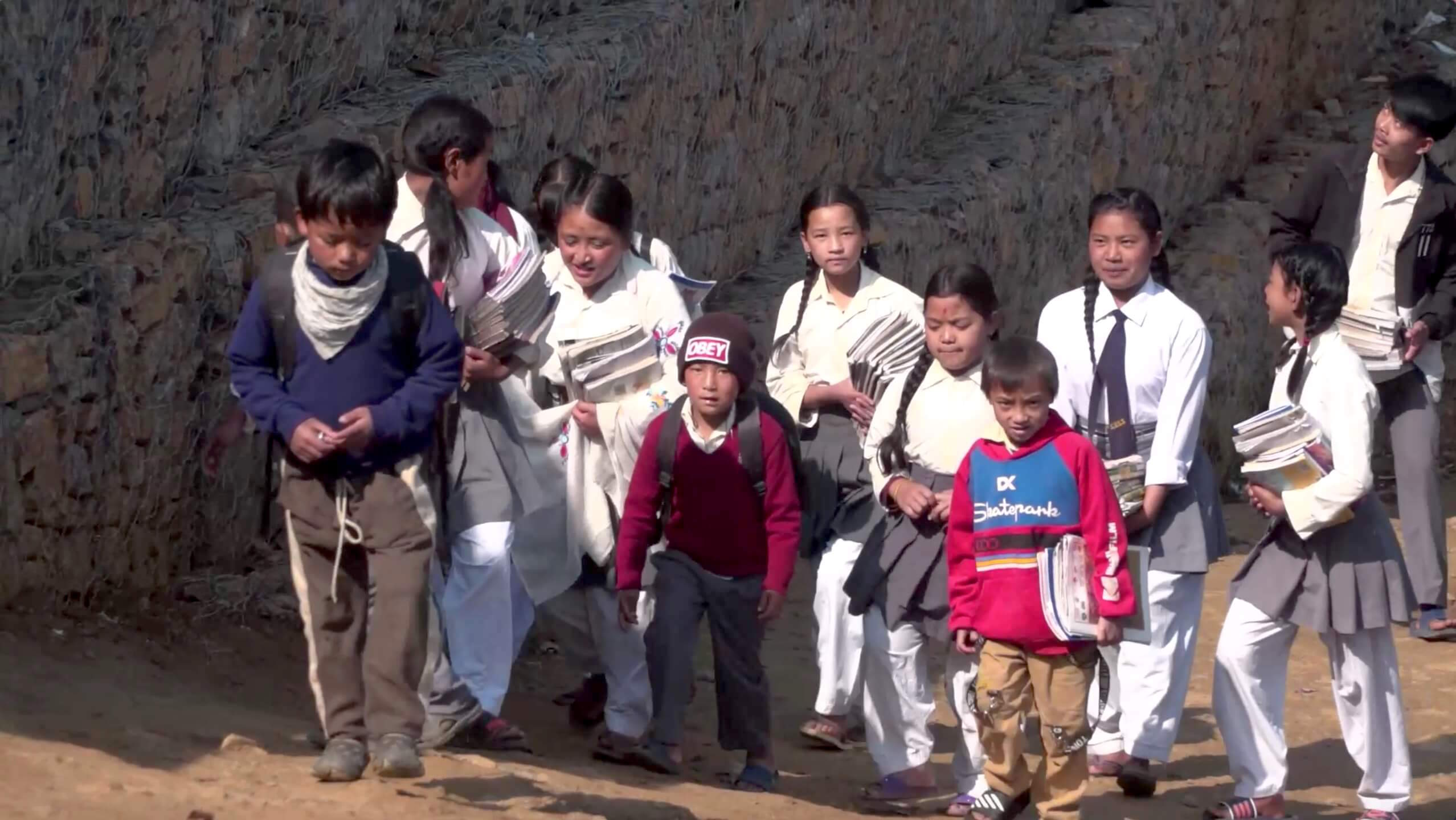Lessons not learned from the pandemic
Nepal has squandered another opportunity to fix a defective education system
Over the past year-and-half, concerns about lockdowns, economic collapse, limited healthcare and shortage of vaccines have taken centre stage. Almost forgotten are millions of Nepali children who have been out of school for that long.
Except for a few weeks earlier this year, there have been no classes since 23 March 2020. Meanwhile, the government and the Ministry of Education has been behind a fig-leaf of remote classes, when surveys have shown that 80% of children do not have any access to classes online, by radio, tv or mobile.
After the first wave, there was enough time to ensure wifi connectivity for public schools at least in urban centres, and prepare for alternative methods of teaching such as remote radio, tv classes and Zoom classes.
None of that was done. Instead, there was a blanket shutdown of schools nationwide, even in sparsely populated mountain districts with negligible Covid-19 spread where classes could easily have been held with mandatory masks and physical distancing.
“Nepal is a federal state, the decision to open or close schools should be a matter for local governments, but Kathmandu forced schools nationwide to close. This has resulted in unnecessary loss for students,” says former education secretary Mahashram Sharma.
Before the Covid-19 crisis, students used to have 180 days of school. Attending class with fellow students and interacting with teachers was an essential part of their upbringing and personality development.
The lack of physical classes and face-to-face learning have meant that even students who are attending online classes have suffered. But a majority of students, especially in government schools, have not had any classes at all.
Most urban private schools have been conducting online classes now for more than a year, teachers and students adjusting and learning to the new technology as they go.
But Nepal’s digital divide has also created an education divide. Most of the 80% of government school children have not attended classes – online or otherwise. Even if they have mobile phones there is not enough bandwidth for digital classes.
“We tried everything from Zoom, Facebook messenger and Google meet to Google Classroom and Microsoft Teams. We also trained our teachers to conduct classes online,” says Batuk Lal Tamang, Principal of Annapurna School in Bharatpur. “But barely 50% of our students attended their classes, the number was much lower for lower grades.”
Annapurna School later surveyed its 700 students to find out how many of them had access to the internet or electronic devices. Less than 20% had internet at home, and only 10% could access data via smartphones. And this is in a city in Chitwan with fairly good infrastructure.

All 280 students at Yasodhara Baudha School in Lalitpur are from rural areas, mostly children of either daily wage labourers or who work as household help. They gave their meagre earnings to parents, and even before the pandemic did not even have enough for stationery and uniforms.
“Alternative learning is just not possible for us, and our experience is that online classes do not work in government schools, attendance was very low despite the free data scheme for the students,” says Yasodhara’s assistant principal Bina Shakya.
She adds that the students have lost interest in studies, many have been forced into child labour, helping their families survive.
If that is the situation in Kathmandu Valley, it cannot be much better elsewhere. At the Mangal Prasad Secondary School in Nepalganj, teachers have tried online and radio classes its students who come from 10 districts of western Nepal. But many of the pupils have been out of touch for the past year.
“We have tried our best for students who are still in contact with us, but it is a small proportion of the total student body,” admits Sandhya Sharma, a teacher at the school.

There was a class divide in Nepal’s education even before Covid-19. The pandemic just widened the gap between urban-rural, private-government, rich-poor.
There are six million students enrolled in schools across the country, a majority of them in government or community schools. Educationists had told the government that the pandemic actually offered an opportunity to upgrade IT facilities in classrooms, train teachers in online instruction, and narrow the digital divide.
For the second year in a row, schools have not been able to hold Secondary Education Examinations (SEE) and have allowed teachers to conduct internal assessments. But in many schools students have not attended neither online nor physical classes.
Higher-level students across the country are also at breaking point, uncertain about their future after more than a year of postponed papers before they graduate.
There is also a risk of higher dropout rates of students once things normalise, undermining Nepal’s decades-long effort to increase school enrolment in rural areas.

The second wave is cresting in Nepal even if daily new cases and fatalities are much higher than when the new lockdown was placed on 29 April. But public health experts are already asking the government to prepare for a possible third wave of the pandemic in which new coronavirus strains put children at risk.
According to official records, some 21,000 children were infected with SARS-CoV-2 during the first wave in Nepal. This number rose to 27,000 in the second wave. Less than 3% of Nepalis are fully vaccinated, and there is not even a WHO-approved vaccine for those under 18.
Experts say that since the second wave has peaked, focus should now shift to restarting physical classes in areas with minimum Covid-19 spread, while maintaining strict mask wearing with physical distancing in well-ventilated classrooms where possible. Elsewhere, schools should upgrade their technical and teaching capacity for online classes, and equip students with devices and connectivity.
The Education Ministry should have already done all these things, of course, but ministers have changed so often in the past two years due to political turmoil that there is no continuity.
Children in Nepal have missed 61 weeks of school, whereas even countries worst affected by the pandemic like India and Brazil have had fewer weeks of closure: 56 and 53 weeks respectively.
Devolution for education

Kanak Mani Dixit of Himalmedia’s tv magazine Saglo Samaj interviewed former education secretary Mahashram Sharma about the role of local governments in revamping Nepal’s education sector post-Covid. Excerpts:
Kanak Mani Dixit: The gap between private and public schools is increasing, more so after the pandemic. How worrying is that?
Mahashram Sharma: From 2000-2015, the world over, the focus was on increasing school enrolment, especially of girls. Nepal did well on score, but not so much on quality. We have not prepared our education sector for times of crisis like this.
Private schools are more accountable to parents and students, but government schools do not have a system to incentivise teacher performance. Until that happens, quality will not improve.
But quality was supposed to improve after federalism put education under the purview of local governments.
This is a textbook case of being given rights, but not resources. Local governments are woefully under-funded. A few municipalities have education experts. At the end of the day, just devolving responsibility doesn’t solve anything. The focus should be on capacity-building and empowering local governments.
Local leaders are politicians, no educators. Even then, their priority is to deploy excavators to build more roads so they can be re-elected. Something long-term like education is not in their priority.
Can the pandemic be an opportunity to rebuild our education sector?
The pandemic did force us to assess SEE students based on internal evaluation instead of mandatory sit-in physical exam. This is a start, it will be the norm now. Similarly, we have been lagging in information technology, and the pandemic could kick-start a campaign to set up computer labs and connectivity in all schools. Digital instruction is the way forward, and the pandemic may spur our acceptance of that fact, even if we eventually get back to the physical classroom.
But it looks like the pandemic has actually widened the digital divide.
Yes, and that is precisely why the government should be playing a leadership role here. It not just to talk about it but implement plans to help poor and disadvantaged children with resources. Local governments should take the first step, and make an inventory of electronic devices and connectivity of each family at the local level and plan accordingly.
Why did we have to close all schools during the pandemic?
First and foremost, education is not on the agenda of local governments. What made matters worse was the blanket closure by the central government. Just before the lockdown, I was in Manang, Lamjung and Syangja, they had no Covid there. Yet schools had been closed for months.
Nepal is a federal state, the decision to open or close schools should be a matter for local governments, but Kathmandu forced schools nationwide to close. This resulted in unnecessary loss for students. The centre is responsible for developing policies but the management of schools is up to the local governments, they just need to be facilitated, especially when it comes to community schools.




